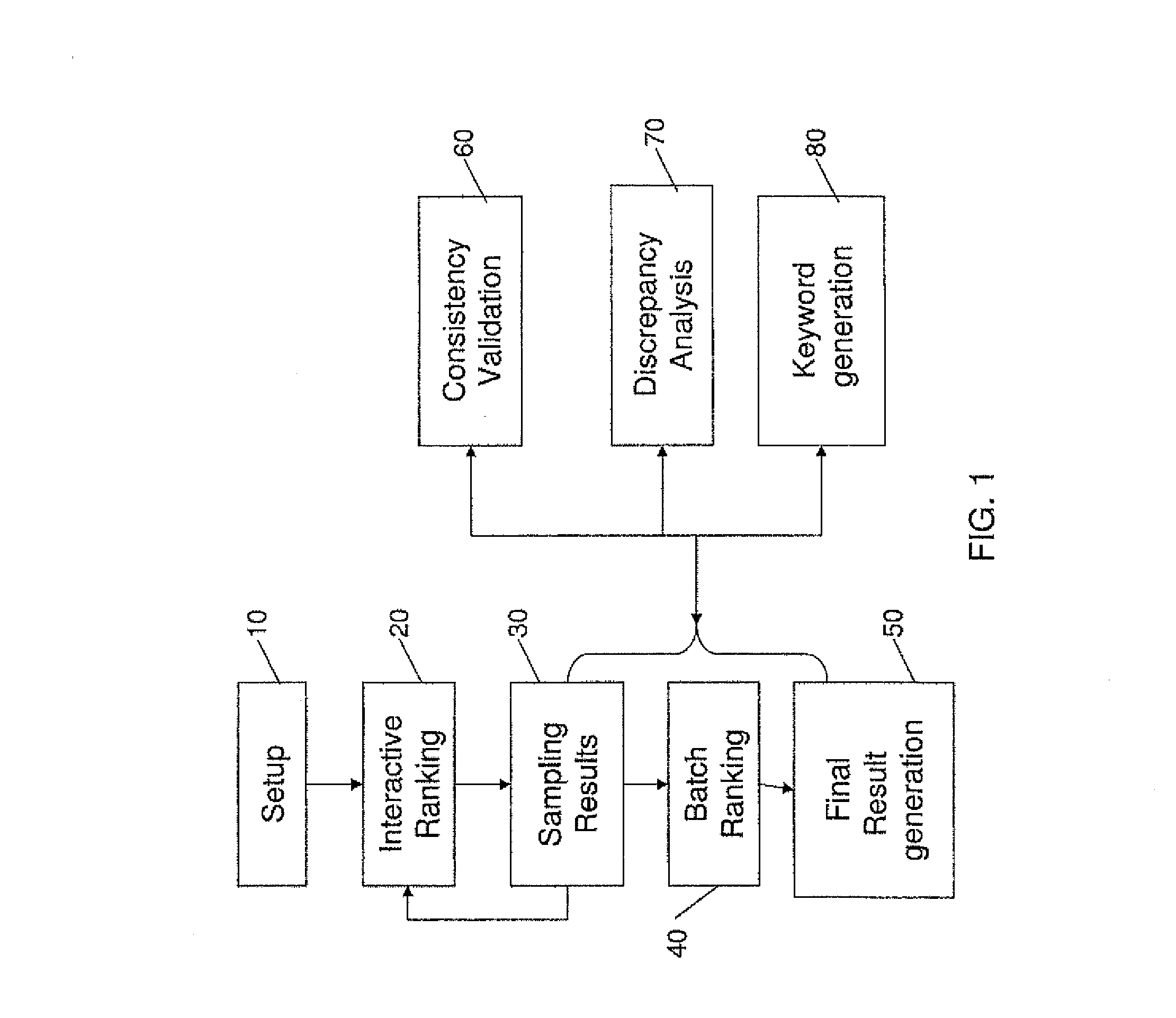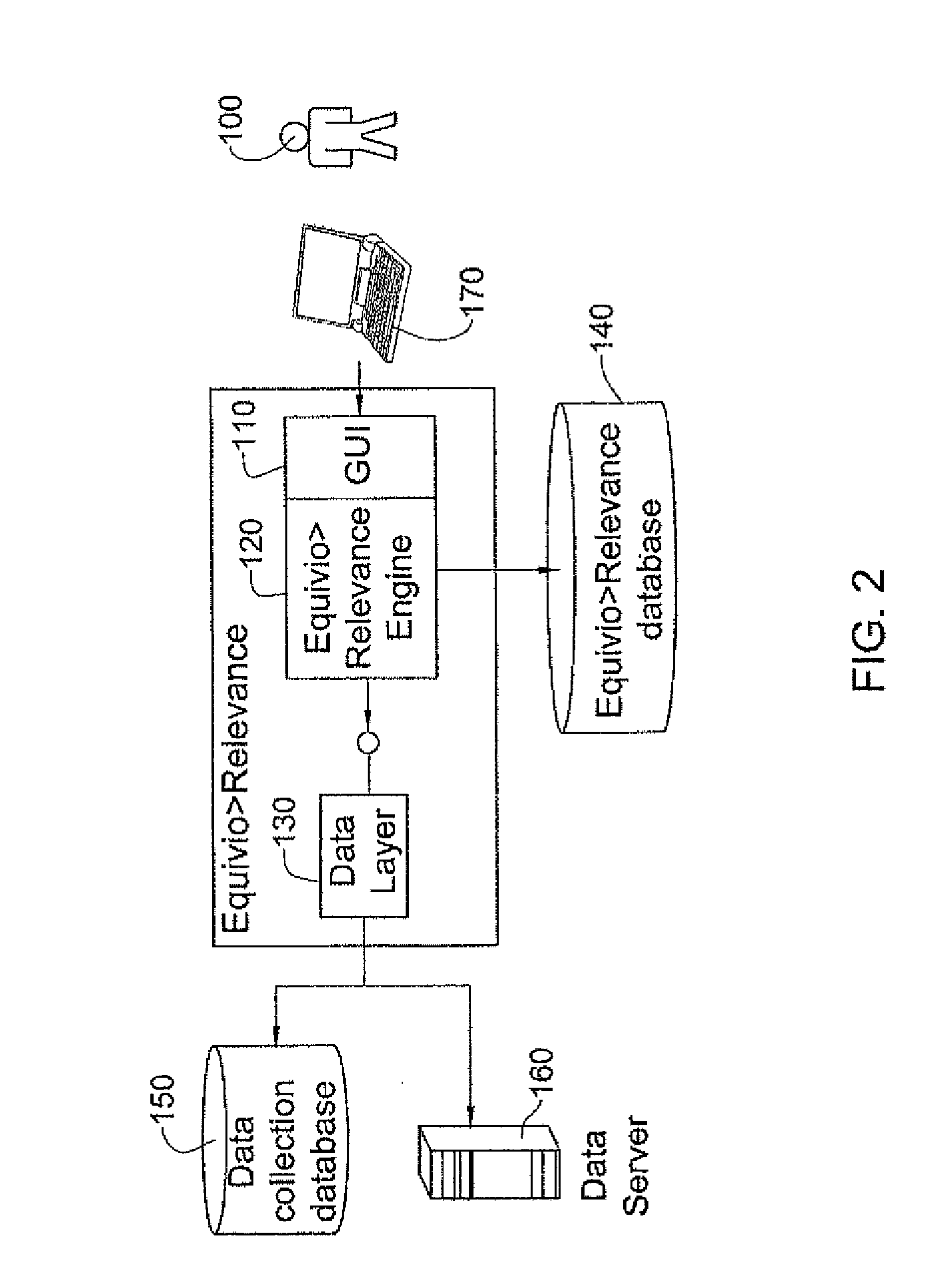System for enhancing expert-based computerized analysis of a set of digital documents and methods useful in conjunction therewith
a computerized analysis and expert-based technology, applied in the field of systems and methods for computerized analysis of digital documents, can solve the problems of uncontrollable variance in errors, risks and costs, clumsy and rigid culling process, and inability to manage and organize document review, so as to reduce the risk of missing key data, reduce the risk of review costs, and save resources
- Summary
- Abstract
- Description
- Claims
- Application Information
AI Technical Summary
Benefits of technology
Problems solved by technology
Method used
Image
Examples
numerical example
[0390]FIG. 18A is a table of binary determinations made by two experts, each of which may comprise a computerized item analysis process having a binary output. FIG. 18B is a table representing sampling of only those items about which the experts of FIG. 18A disagreed i.e. only of the union of the 20,000 items deemed non-relevant by Expert1 and relevant by Expert2 and of the 45,000 items deemed relevant by Expert1 and non-relevant by Expert2.
[0391]The computations of step 2160 yield:
[0392]n11 0.13402
[0393]n21 0.04639
[0394]n12 0.02062
[0395]x1 0.33333
[0396]x2 0.6
[0397]m1 0.18041
[0398]m2 0.15464
[0399]A1−0.0515
[0400]B1 0.04467
[0401]C1−5.4802
[0402]D1 5.20704
[0403]A2 2.3803
[0404]B2−0.0804
[0405]C2 2.88751
[0406]D2−0.1082
[0407]alpha 12.8958
[0408]beta −12.7
[0409]gamma 0.41388
[0410]r2 roots[0411]root_1 0.95111[0412]root_2 0.03374
[0413]r2 0.95111
[0414]r1 0.82768
[0415]q1 0.01694
[0416]q2 0.02274
[0417]p 0.16984
[0418]The precision, recall and F-measure of the two experts are as summarized in the tab...
PUM
 Login to View More
Login to View More Abstract
Description
Claims
Application Information
 Login to View More
Login to View More - R&D
- Intellectual Property
- Life Sciences
- Materials
- Tech Scout
- Unparalleled Data Quality
- Higher Quality Content
- 60% Fewer Hallucinations
Browse by: Latest US Patents, China's latest patents, Technical Efficacy Thesaurus, Application Domain, Technology Topic, Popular Technical Reports.
© 2025 PatSnap. All rights reserved.Legal|Privacy policy|Modern Slavery Act Transparency Statement|Sitemap|About US| Contact US: help@patsnap.com



